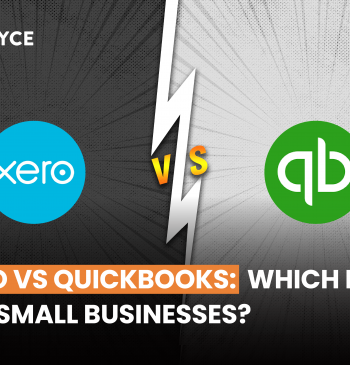23 Feb

Accounting standards are principles and guidelines that provide a framework for financial reporting. They are designed to ensure that financial reports are accurate, transparent, and comparable across different companies and industries. The accounting standards ensure that the financial statements are prepared relatively and consistently across the business.
In addition, it make the financial information credible and allow for more economic decisions based on accurate and consistent reports.
Table of Contents
What are Accounting Standards?
The accounting standard is a set of principles, procedures, and means that define the basis of financial accounting practices and policies.
Accounting standards are the authoritative standard for financial reporting and the primary source of generally accepted accounting principles.
Moreover, It is a set of policies and practices used to systematize bookkeeping and other accounting functions across firms and over time.
Benefits of Implementing Accounting Standards
Accounting standards are the ruling authorities in the world. It makes sure that the information provided to potential investors is not misleading in any way. So let us take a look at the benefits of accounting standards.
1. Attains uniformity in Accounting
It provides rules for standard treatments and recording of transactions. They even have a standard format for financial statements. These are steps in achieving uniformity in accounting methods.
2. Improve Reliability of Financial Statements
There are many stakeholders of a company, and they rely on financial statements for their information. In addition, many of these stakeholders base their decision on the data provided by these financial statements.
3. Comparability
This is another primary objective of accounting standards. Since all countries follow the same set of standards,therefore their financial accounts become comparable to some extent. Therefore, the financial statement user can analyze and compare the financial performances of various companies before making any decision.
4. Determining Managerial Accountability
It also helps measure the performance of the management of the entity. For example, it can help measure the management’s ability to increase profitability, maintain the firm’s solvency, and other such critical financial duties of the administration.
5. Assists Auditors
The accounting standards lay down all the accounting rules, regulations, etc., in a written format. These policies have to be followed. So if an auditor checks that the procedures have been correctly followed, he can be assured that the financial statements are fair and accurate.
6. Prevents Frauds and Accounting Manipulation
Accounting standards lay down the accounting principles and methodologies that all entities must follow. One outcome of this is that management of an entity can not manipulate financial data. Following these standards is not optional. It is compulsory.
Objectives
An accounting standard is often considered the language of business as it communicates the financial position of a company to interested parties.
- The main objective is to improve the reliability of financial statements. Because the financial statements must be made following the standard, the user can rely on them. They know that not conforming to these standards can have severe consequences for the companies.
- Following these standards will allow for intra-firms and inter-firm comparisons. This allows us to check the progress of the firms and their position in the market.
- It also provides one set of accounting policies that include the necessary disclosure requirements and valuations method of various financial transactions.
Limitations
There limitations of Accounting standards are as under.
Restricted Scope
Accounting standards can not override the law’s statutes. They have to be framed within the confines of the rules prevailing at the time. That can limit their scope to provide the best policies for the situation.
Difficulty Between Choosing Alternatives
There are alternatives for specific accounting treatment or valuations. For example, FIFO, LIFO and weighted average methods can be used to value stocks. So choosing between these alternatives is a tough decision for management. Unfortunately, the accounting standard does not provide guidelines for the appropriate choice.
Why are Accounting Standards Applicable?
Accounting standards improve the clarity of financial reporting in all countries. However, they specify when and how economic events are recognized, displayed, and measured.
External entities such as investors, banks, and regulatory agencies rely on accounting standards to ensure relevant and accurate information about the entity.
These technical advertisements have ensured transparency in reporting and set the boundaries for financial reporting measures.
Types
The three main types of accounting standards are as follow.
Presentation Accounting Standards
These standards outline the accounting information that passes for presentation and the order. This information can include specific financial statements—relative to the disclosure statement. Presentation statements have a small degree of restriction on the choice of accounting policies.
Disclosure Standards
Disclosure standards refer to the basic systematic set of guidelines for external reporting. These standards require only a plain but clear-cut disclosure of the assumption, accounting principles, and method used in preparing financial statements.
National and Global Accounting Standard
Although some businesses operate within the country’s border, others reach beyond the edge. For the latter, this has meant adopting international accounting standards. This is where international financial reporting standards come in.
Content standards
These standards specify the content to publish. Content standards have three aspects such as disclosure, conceptually, and specific.
| # | Issue Date | Name |
|---|---|---|
| IAS. 1 | 2007 | Presentation of Financial Statements |
| IAS. 2 | 2005 | Inventories |
| IAS. 3 | 1976 | Consolidated Financial Statements |
| IAS. 4 | Depreciation Accounting withdrawn in 1999 | |
| IAS. 5 | 1976 | Information to be Disclosed superseded by IAS 1 effective 1 July 1998 |
| IAS. 6 | Accounting responses to Changing Prices Superseded by IAS 15, which was withdrawn December 2003 |
|
| IAS. 7 | 1992 | Statements of Cash Flow |
| IAS. 8 | 2003 | Accounting Policies, Changes in Accounting Error and Estimates |
| IAS .9 | Accounting for Research and Development Activities | |
| IAS. 10 | 2003 | Events after the reporting |
| IAS. 11 | 1993 | Construction Contracts Superseded by IFRS 15 as of 1 January 2017 |
| IAS. 12 | 1996 | Income tax |
| IAS .13 | Presentation of current Asset and Current Liabilities Superseded by IAS 1 effective one July 1998 |
|
| IAS. 14 | 1997 | Segment reporting Superseded by IFRS 8 effective 1 January 2009 |
| IAS. 15 | 2003 | Information Reflecting the Effect of Changing Prices |
| IAS. 16 | 2003 | Property, plant, and equipment |
| IAS. 17 | 2003 | Leases Superseded by IFRS 16 effective 1 January 2019 |
| IAS. 18 | 1993 | Revenue Superseded by IFRS 15 effective 1 January 2017 |
| IAS. 19 | 1998 | Employee benefits (1998) superseded by IAS by IAS 19 (2011) effective 1 January 2013 |
| IAS. 19 | 2011 | Employee benefits (2011) |
| IAS. 20 | 1983 | Accounting for Government Grants and Disclosure of Government Assistance |
| IAS. 21 | 2003 | The Effect of Changes in Foreign Exchange Rate |
| IAS. 22 | 1998 | Business Combination Superseded by IFRS 3 effective 31 march 2004 |
| IAS. 23 | 2007 | Borrowing cost |
| IAS. 24 | 2009 | Related party disclosure |
| IAS. 25 | Accounting for investment superseded by IAS 39 and IAS 40 effective 2001 |
|
| IAS. 26 | 1987 | Accounting and reporting by retirements benefits plans |
| IAS. 27 | 2011 | Separate financial statements (2011) |
| IAS. 27 | 2003 | Consolidated and separate financial statement Superseded by IFRS by 10, IFRS 12, and IAS 27(2011) effective 1 January 2013 |
| IAS. 28 | 2011 | Investment in Associate and Joint ventures(2011) |
| IAS. 28 | 2003 | Investments in Associates |
| IAS. 29 | 1989 | Financial reporting in hyperinflationary economics |
| IAS. 30 | 1990 | Disclosure in the financial statement of banks and similar financial institutions superseded by IFRS 7 effective 1 January 2007. |
| IAS. 31 | 2003 | Interest in joint ventures Superseded by IFRS 11 and IFRS 12 effective 1 January 2013. |
| IAS. 32 | 2003 | Financial instruments: presentation |
| IAS. 33 | 2003 | Earning per share |
| IAS. 34 | 1998 | Interim financial reporting |
| IAS. 35 | 1998 | Discontinuing operation superseded IFRS 5 effective 1 January 2005 |
| IAS. 36 | 2004 | Impairments of Assets |
| IAS. 37 | 1998 | Provision, contingent liabilities, and contingent Assets |
| IAS. 38 | 2004 | Intangible assets |
| IAS. 39 | 2003 | Financial instruments: Recognition and measurement superseded by IFRS 9 where IFRS 9 is applied |
| IAS. 40 | 2003 | Investment property |
| IAS. 41 | 2001 | Agriculture |
Key Takeaways
- An accounting standard is a guiding principle that defines the treatment of an accounting transaction in a financial statement.
- It should apply to the full extent of an entity’s financial picture, including assets, revenue, liabilities, expenses, and shareholders’ equity.
- Accounting standards guide for companies to prepare and report applicable financial statements accurately.
Marjina Muskaan has over 5+ years of experience writing about finance, accounting, and enterprise topics. She was previously a senior writer at Invyce.com, where she created engaging and informative content that made complex financial concepts easy to understand.
Related Post
Copyright © 2024 – Powered by uConnect



Marjina Muskaan